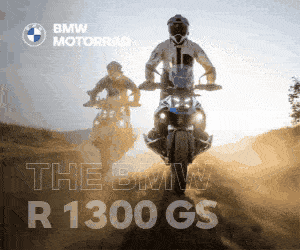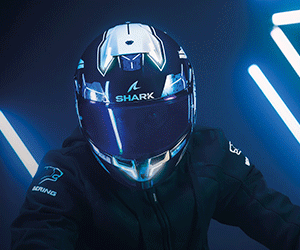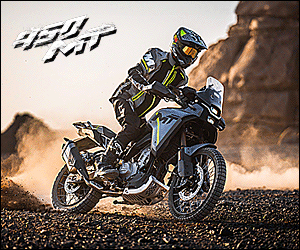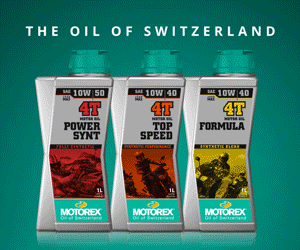2018 Yamaha YZ450F – Motorcycle Review
2018 YZ450F Test by Todd Jarratt – Images by iKapture and Yamaha
MCNews.com.au sent Todd Jarratt along to the launch of the 2018 Yamaha YZ450F last week and today he reports in his findings from two full moto days aboard the “bLU cRU” flagship motocross model.
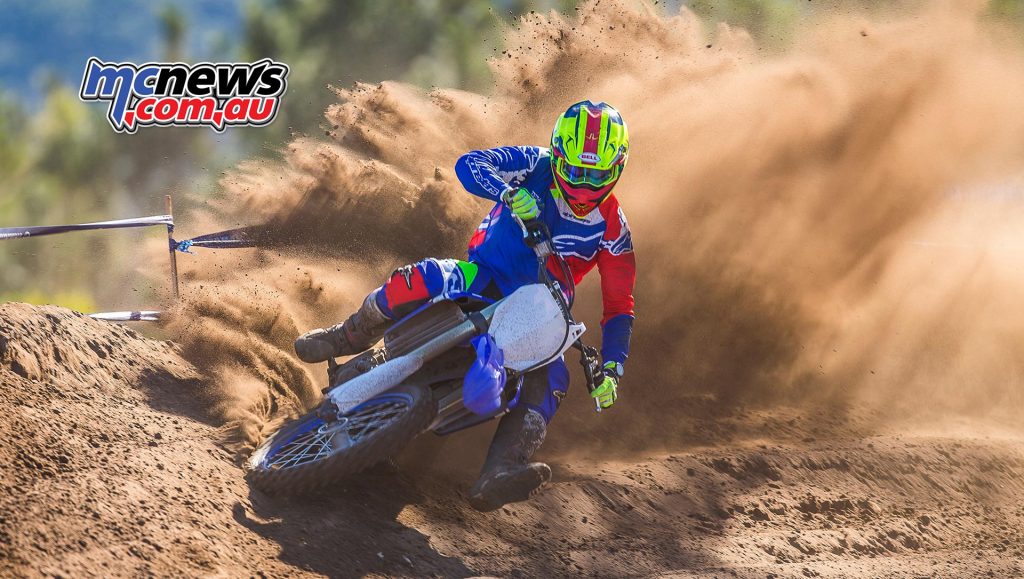
2018 heralds a quadrennial generational change for the YZ450F. With major updates to the chassis, suspension, engine and aesthetics, Yamaha’s latest release leaves previous models in its wake and if history serves correctly, is set to become the launching pad YZ450F for the next four seasons.
For 2018 the new machine is just under 1.4kg lighter, features an electric-only start system, much narrower cockpit, more rigid and contactable frame, a new, flat, tool-free access air filter, heavily updated engine, and new, lightweight plastics just to name a few.
Below is a more detailed breakdown of the changes made, as well as my thoughts after a few days on the bike of how each update affects the bike – both positively and negatively, and importantly, how the new model stacks up against previous years and current competitors.
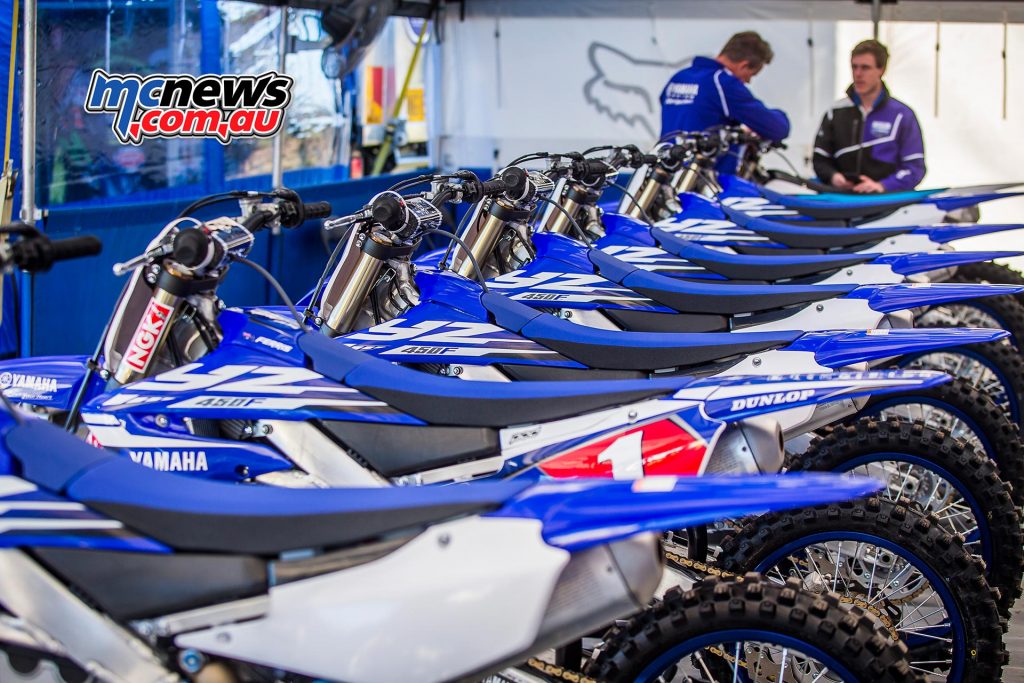
Chassis
Up-top, the four-position handle bar mounts remain, however, the handle bar mounting position is now 5mm higher, the steering tube has moved forward 6mm and the triple clamp offset has increased from 22mm to 25mm (leading to a 3mm increase in trail from 118mm to 121mm). Overall, I feel this small combination of changes has opened up the cockpit / lap space, meaning more freedom for movement and greater front-end control.
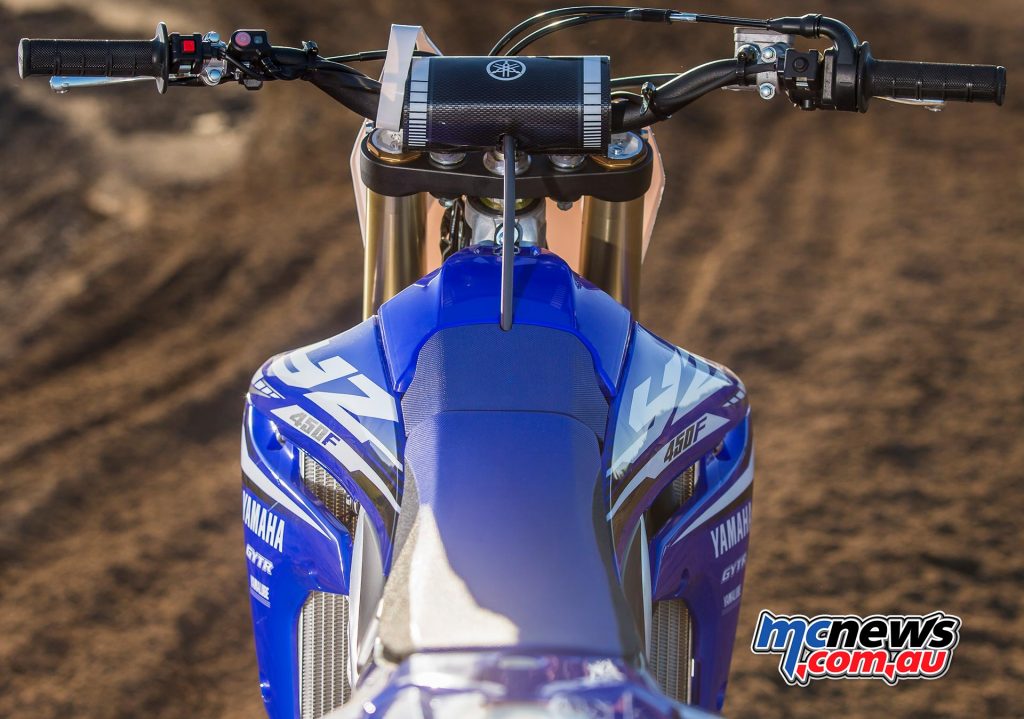
Further enhancing the opened-up lap space, is the fact that the seat is now 8mm lower in the middle (lowest point), 19mm lower at the rear fender junction, and 18mm slimmer at the tank where it meets with a 16mm narrower fuel tank. This provides a MUCH narrower feel between the legs in the cockpit, which accompanies the “opened-up” feeling via the handlebar and mount changes.
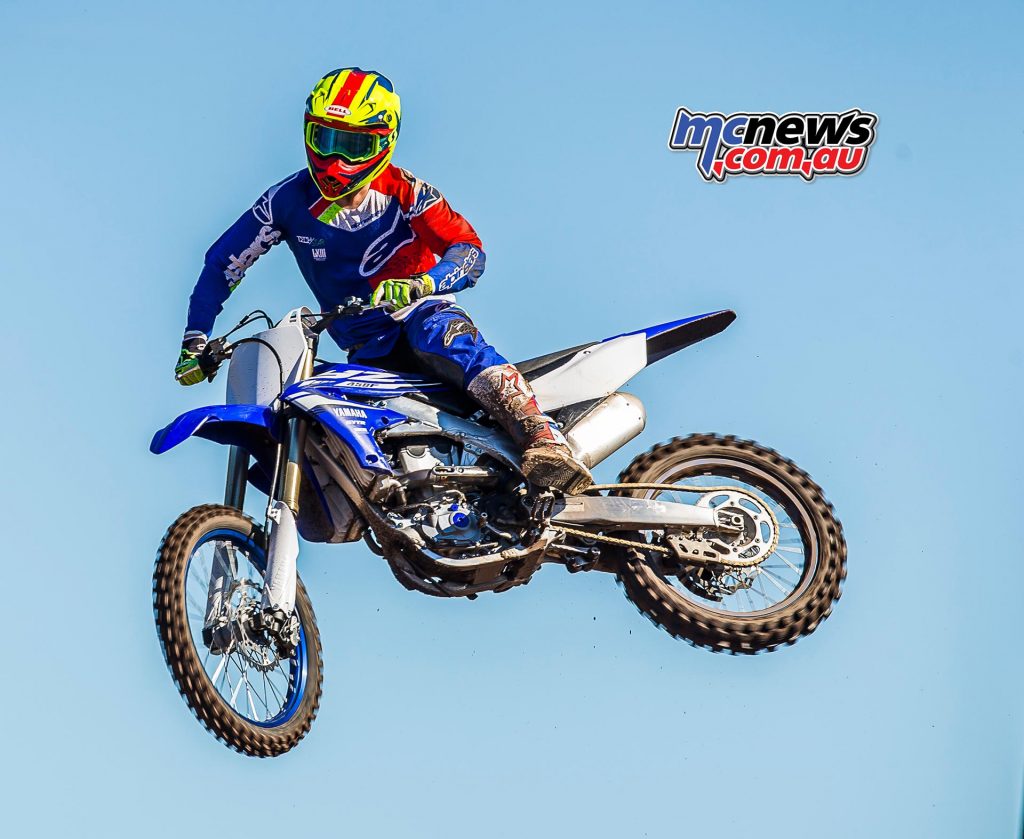
The only possible drawback that I can think of with this update is that the fuel tank capacity has dropped from 7.5 to 6.2L, meaning longer ride durations may be a little less inviting. However, as a guy not typically putting in 45 minute motos on sand tracks, I’m happy to drop 1.2L of fuel capacity to greatly improve my comfort on the bike.
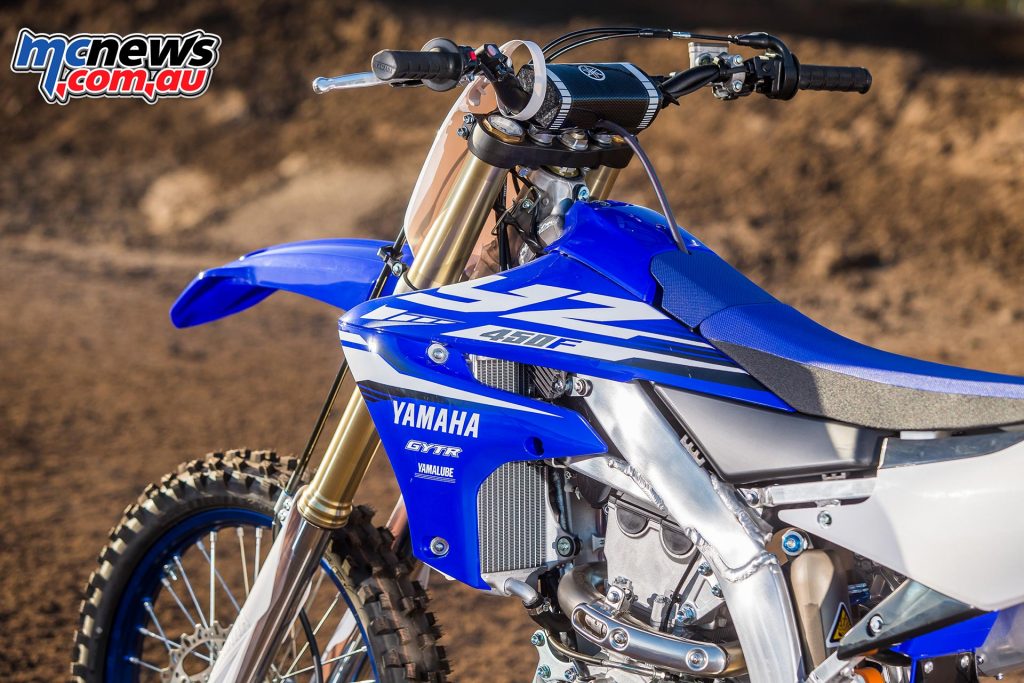
A little further down, the tank rail surrounding the fuel compartment (triangulated absorption zone if you want to get fancy), has been changed from an “s” to a straight line, which has significantly increased the rigidity of the frame while also enabling a smoother flex character. In addition, the cradle pipe shape has changed from square to rectangle and the tension pipe has been modified from extrusion to forging type. This means that the frame is lighter AND stronger, which is backed up by Yamaha confirming that the updated frame is 25% more rigid vertically, 9% more horizontally and 15% stronger in torsional rigidity – so not only less weight, but greater durability in all directions.
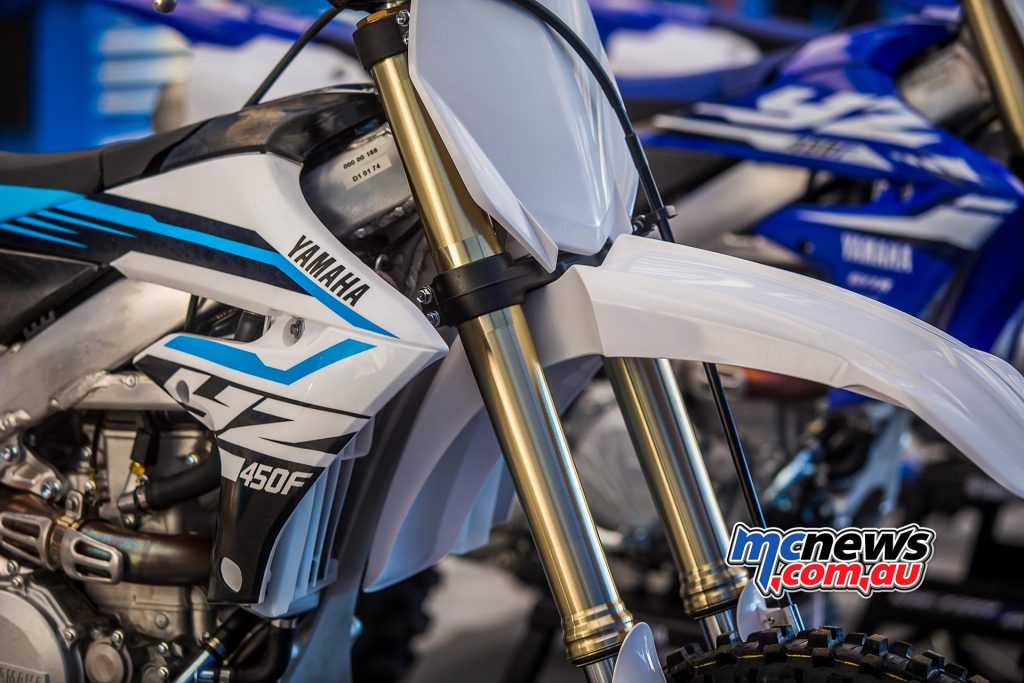
Just below the tank rail, the cylinder now sits 2° more upright (moving from 8.2° to 6.2° tilt). The updated cylinder angle is partnered with new 9.5mm thick aluminium engine mount brackets, which replace the old 6mm thick steel pieces. The new brackets have also been moved to the rear of the head, which link in with the new cylinder positioning in achieving greater mass centralisation – a major goal of Yamaha in their current design.
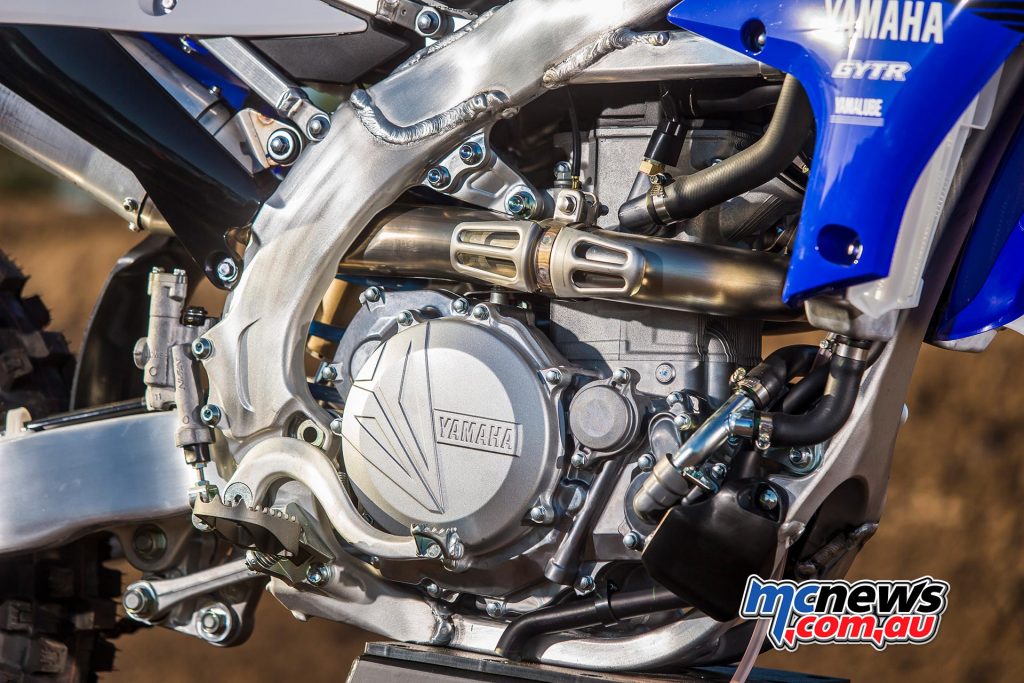
Another key frame change has been made by widening the swing-arm bracket by 10mm and decreasing its thickness by 6mm, all while flattening out the previously convex shape of the area to increase the boot-frame surface area contact. Overall, the updates made from the handlebars all the way down to the swing arm area combine to provide a much more stable, lightweight feel. The bike is very well balanced, feels agile, narrow and nimble, and handles extremely well. The changes made to chassis are all in the right direction and ultimately eliminate the “wide tank” feel that previous models have been criticized for – so a big bunch of ticks for Yamaha there.
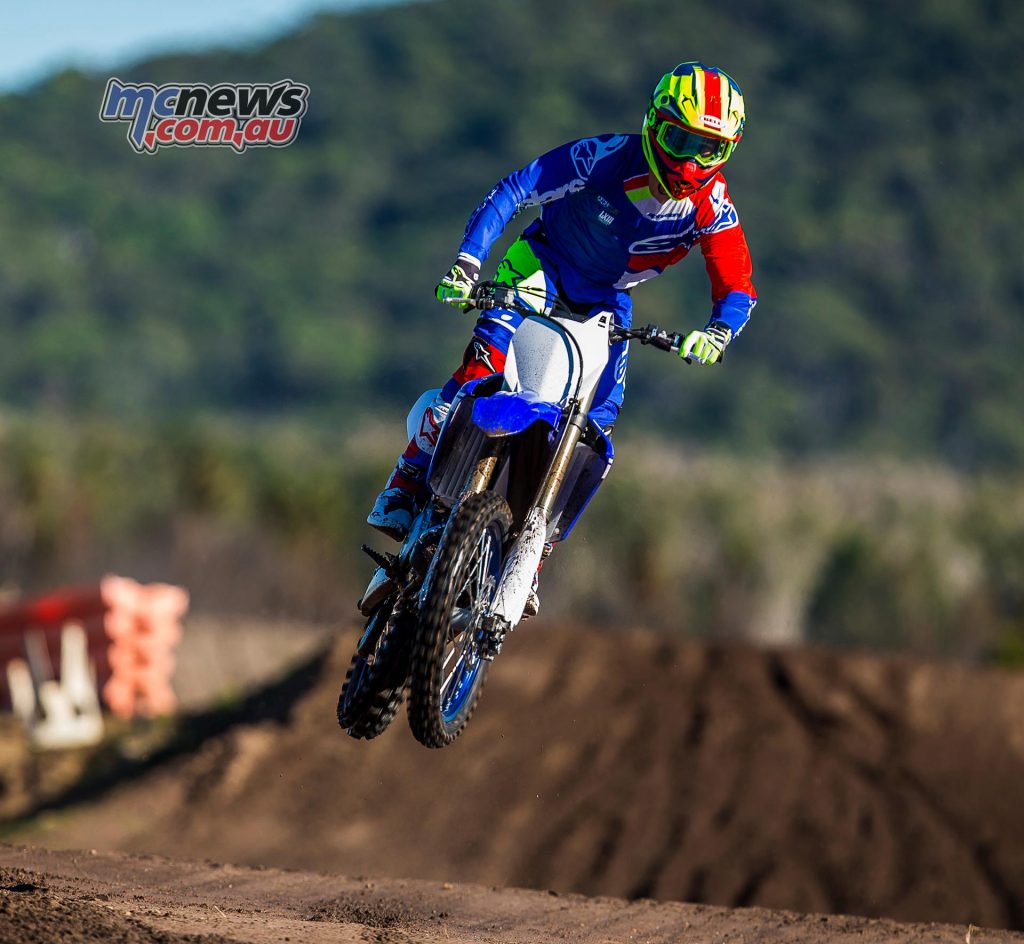
Cooling
For 2018, the radiator has been brought 6mm closer to the frame and mounted 6° more upright. The surface area of the radiator has also been increased by 4.5% and is now protected by five fins rather than four. The airflow is improved too, as a new front fender has increased the amount of air directed to the fins and radiator itself, meaning the bike can be kept cooler.
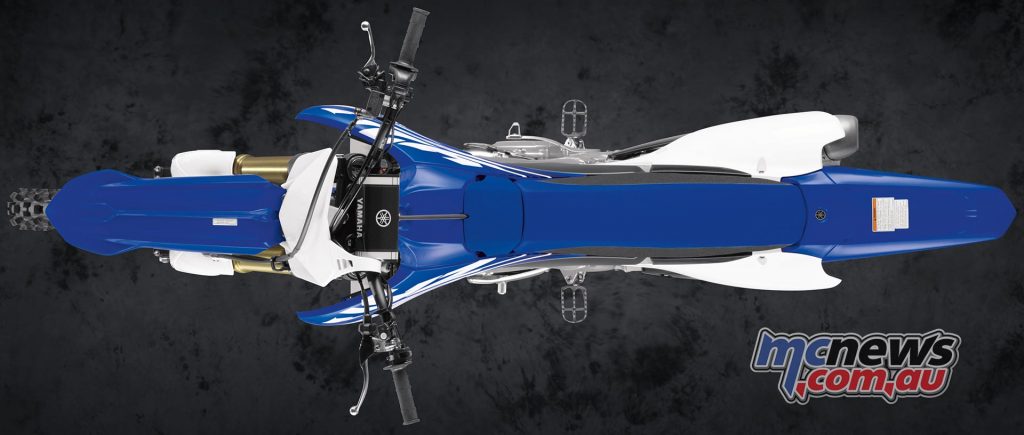
Suspension
Up-front, the KYB forks feature 1mm greater cylinder and piston sizes, increasing from 24 to 25mm. The forks also now utilise leaf-spring, mid-speed valves instead of the previous coil spring, while the pressure piston shape internally has also been changed and has more holes added to enable a greater flow of oil. Cumulatively, I found these updates have led to more controlled damping, and an increased consistency in the push (compression) through the stroke. The rear half of the suspension package sees a couple of upgrades, namely an increased rear shock body sub-tank capacity of 30cc, as well as increased rigidity and 210g weight decrease of the spring itself thanks to new shock material being implemented.
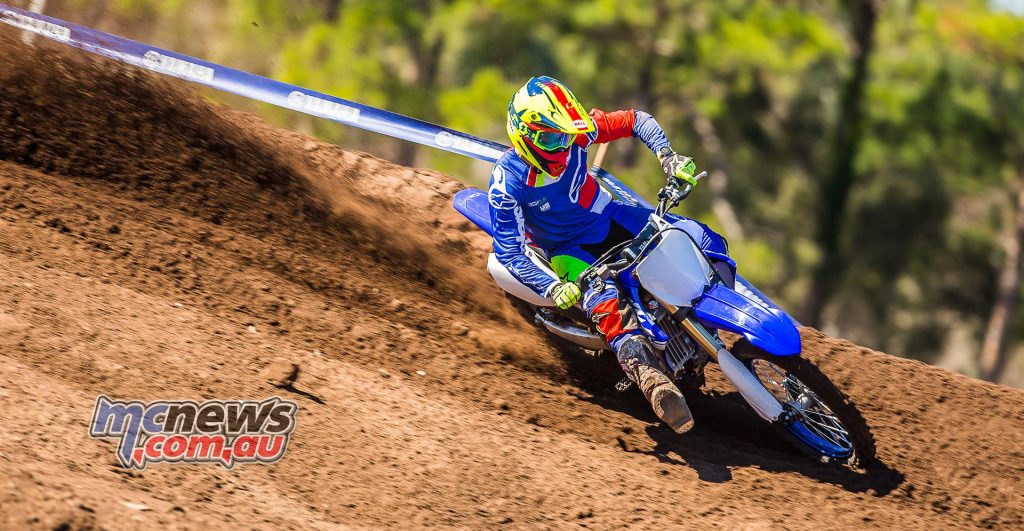
In my opinion, the KYB setup that Yamaha have provided this year is very impressive. Building on the oil-spring package they have been refining over the last few years seems to have paid off too, as the majority of the manufacturers that ventured toward air forks are now returning, while Yamaha never left. It was hard to fault the Yamaha’s suspension previously, though suspension is only as good as the frame it supports, and in 2015 I struggled with finding a balance aboard the YZ450F – meaning I wasn’t comfortable with that model’s chassis.
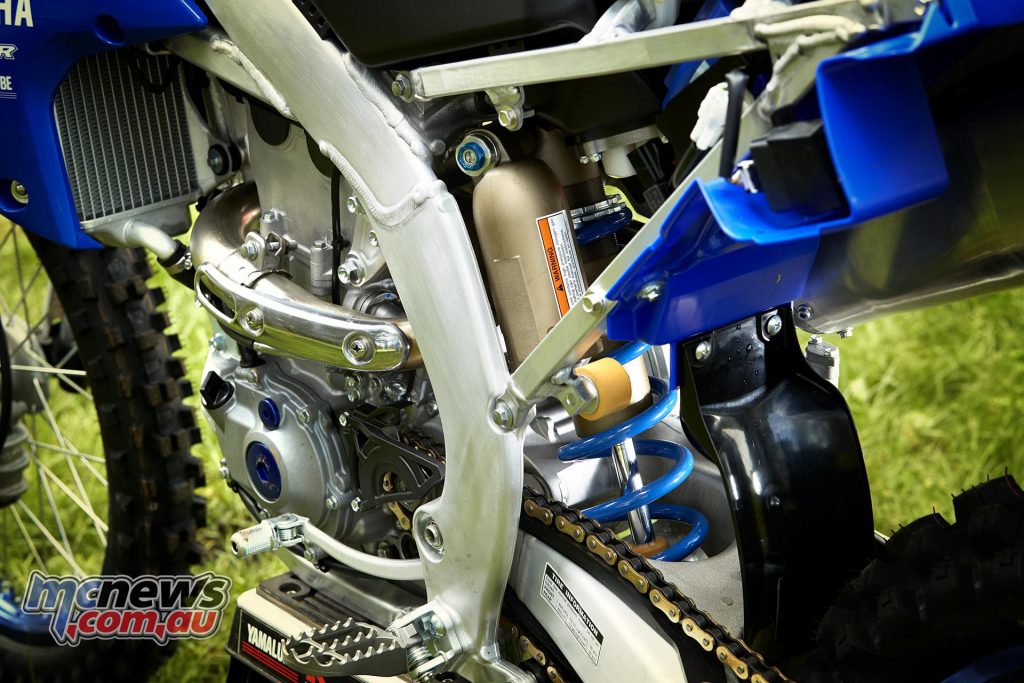
However, this was revised for 2016 and I loved the bike dead-stock then, as I do now. After 20-30 minutes of riding the bike in its out of the crate trim, I found that as usual the standard fork setting was a little soft for me under brakes and upon landing. So, the CDR technicians and I simply stiffened the fork compression by two clicks and slowed down the rear-shock rebound by a quarter turn, and voila, I was sorted. I didn’t have to make any more adjustments for the rest of my two days on the bike, as I felt in total control (except for one occasion – see below).
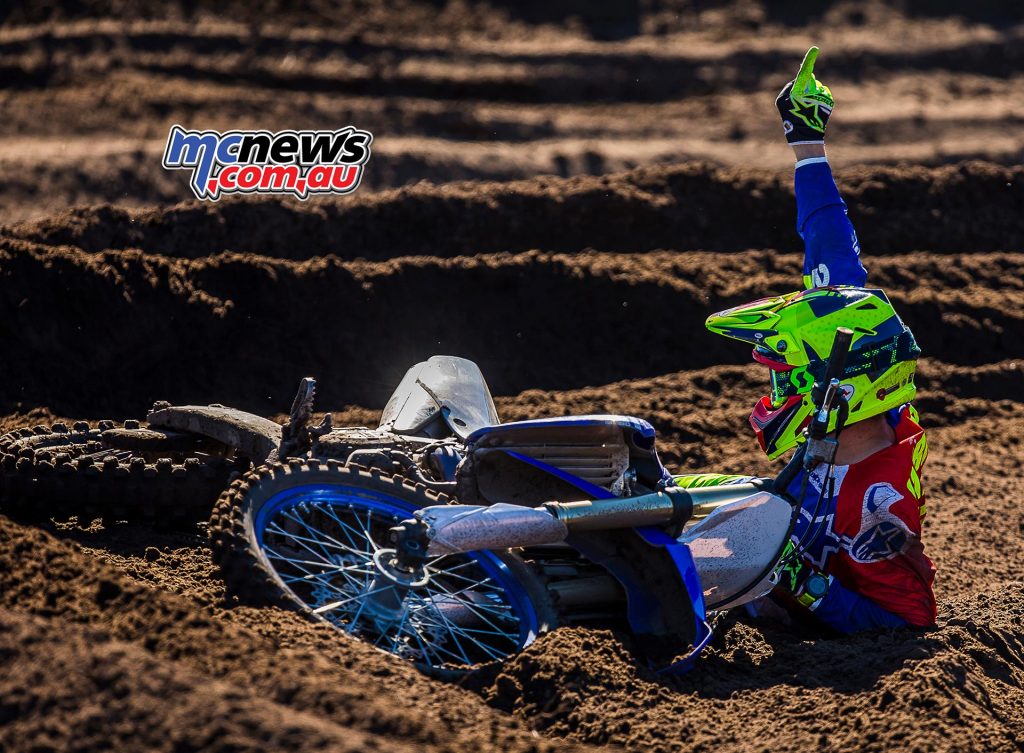
The bike didn’t tuck or push through in the front end and it didn’t step out or unload in the rear. It tipped into soft turns well, remained settled under brakes and was very predictable on an irregular surface. So throw a couple more ticks on to the current package.
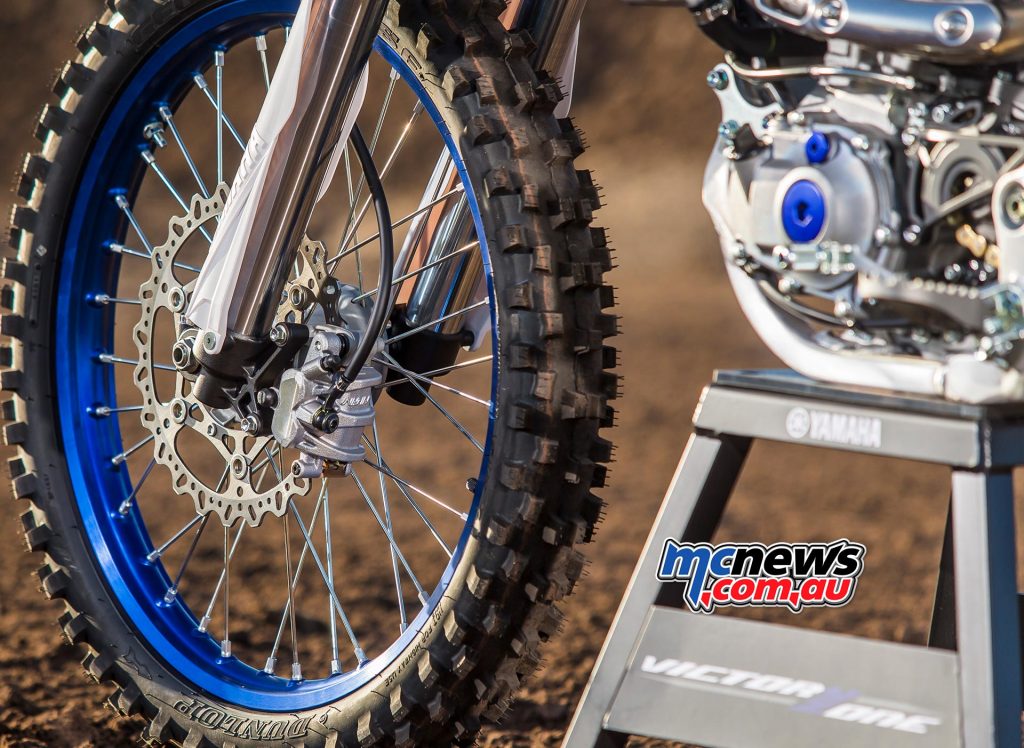
Engine
The power plant for 2018 featured a host of updates including a 6g lighter piston, longer spark plug electrode, further increased compression ratio (12.5 to 12.8:1), 12mm longer header pipe, 3mm narrower diameter at the pipe junction, 44mm Mikuni throttle body (previously Keihin) with 12-hole injector and compact throttle position sensor (TPS). It’s a mouthful huh, but that’s not all… The YZF also features a straighter intake port and 4° increase in intake camshaft working angle. There is now also a 2° increase in the exhaust camshaft working angle and the event angle is actually decreased by 5°, while the valve-timing over-lap is wider by 8°. What does all this jargon mean though, because I sure didn’t understand it at first…
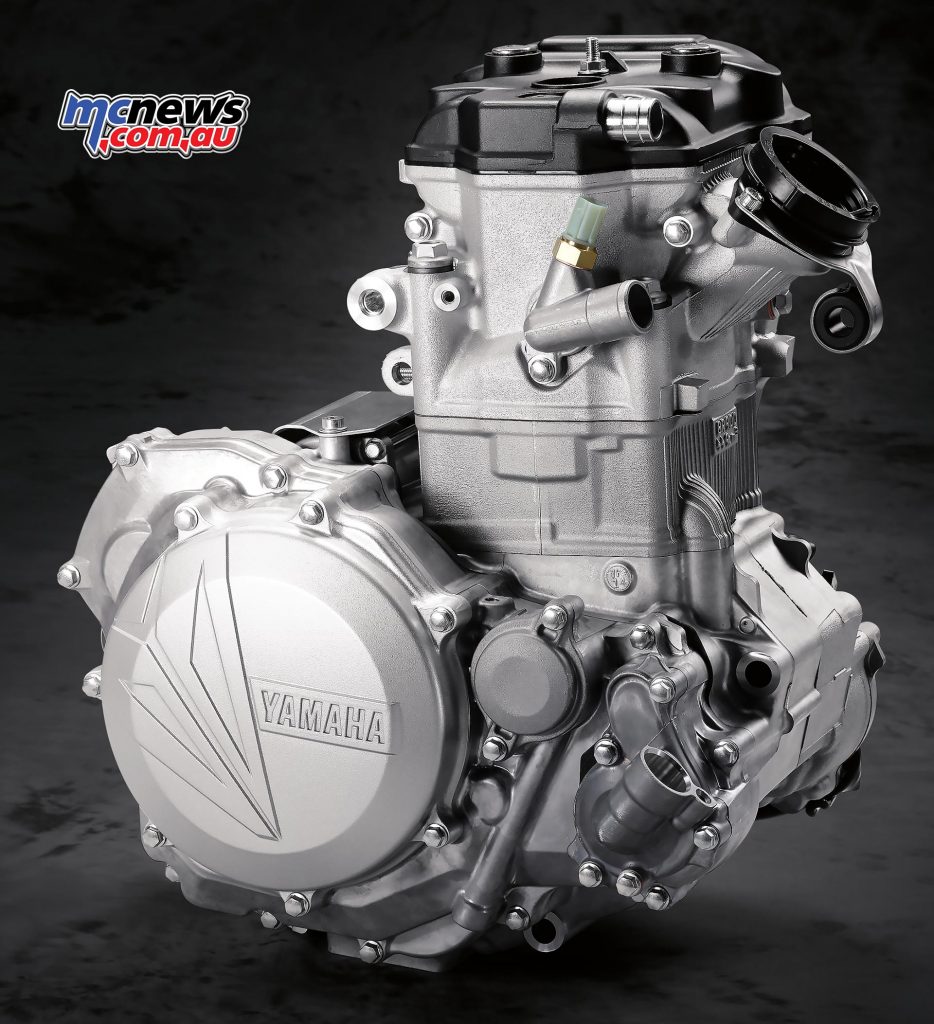
In a nutshell, despite the increased compression ratio, the power delivery is much more controllable in the lower to middle RPM than in previous years. This was really noticeable too! Where the YZF used to try to rip your arms off, the 2018 model is much friendlier and builds your confidence in wrapping the throttle on a little more. You don’t have to be as timid or hesitant now, but there is still plenty of that 450 power needed to get you out of turns quickly. It should be noted however, that we tested the new big blue at Coolum, which is a sand track, so the power delivery will feel different on a hard pack or tacky track. I know personally, I like a bike with plenty of bottom end torque so I hope to find out how the YZF performs on hard pack very soon.
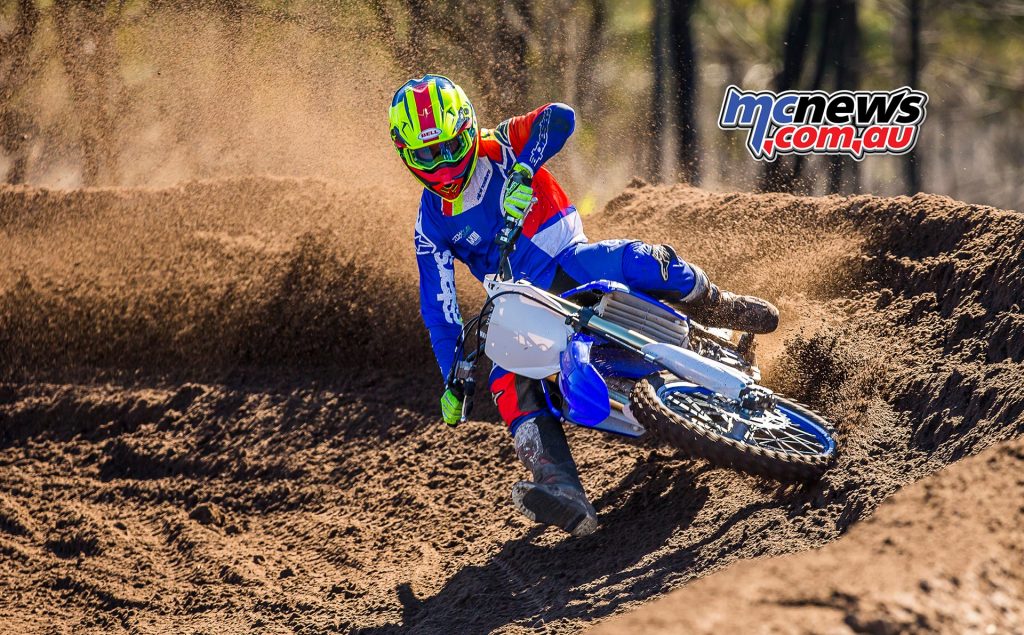
Transmission & Clutch
For 2018, Yamaha have opted for wider, stronger 2nd, 3rd and 4th gears by increasing each gears width by 1mm and updating the design of the pressure plate. They have also added grinding to both sides of the steel clutch plates now, which hasn’t been seen previously amongst the YZ450F’s. The popular launch control system (LCS) remains as standard equipment aboard the new YZ too, which assists greatly with traction control in starting situations.
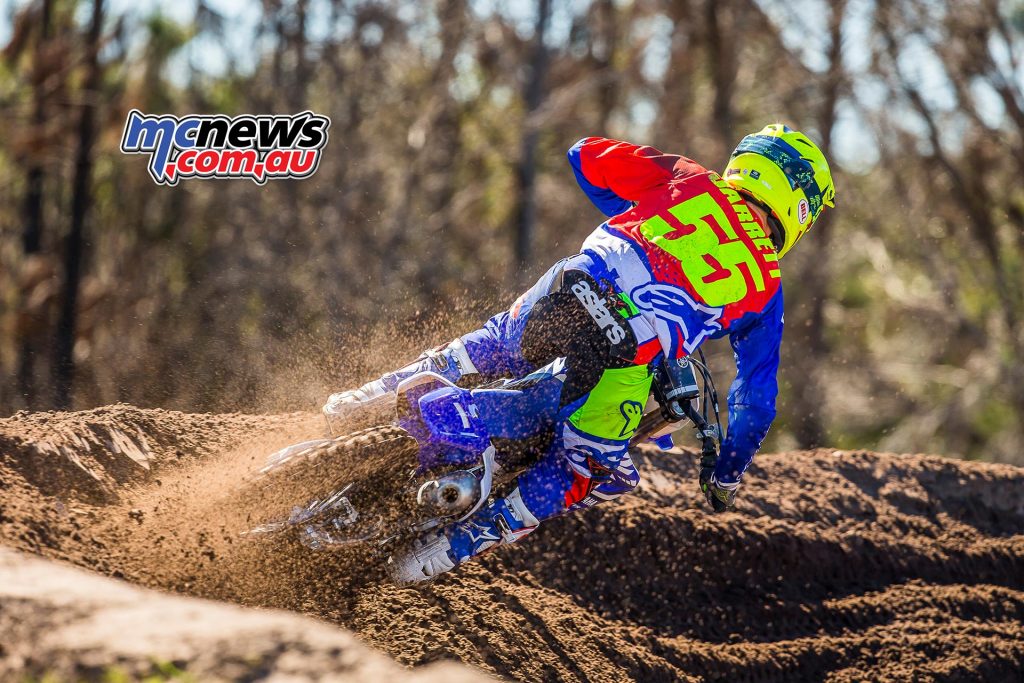
Electric Start
One of the most important new features for Yamaha’s 2018 model is that of the push-button electric-start system. The system utilises a lightweight (713g) 2.3Ah / 13.2 Lithium-Ion battery, which is around 1.4kg lighter than the electric start battery used on the YZ450FX. The power generating capacity (ability to consistently start) has been ensured by increasing the balance ratio (inertia on the crank) from 50 to 60%, and decreasing the inertia on the rotor by first, reducing the width by 2.1mm and second, increasing the diameter by 4mm.
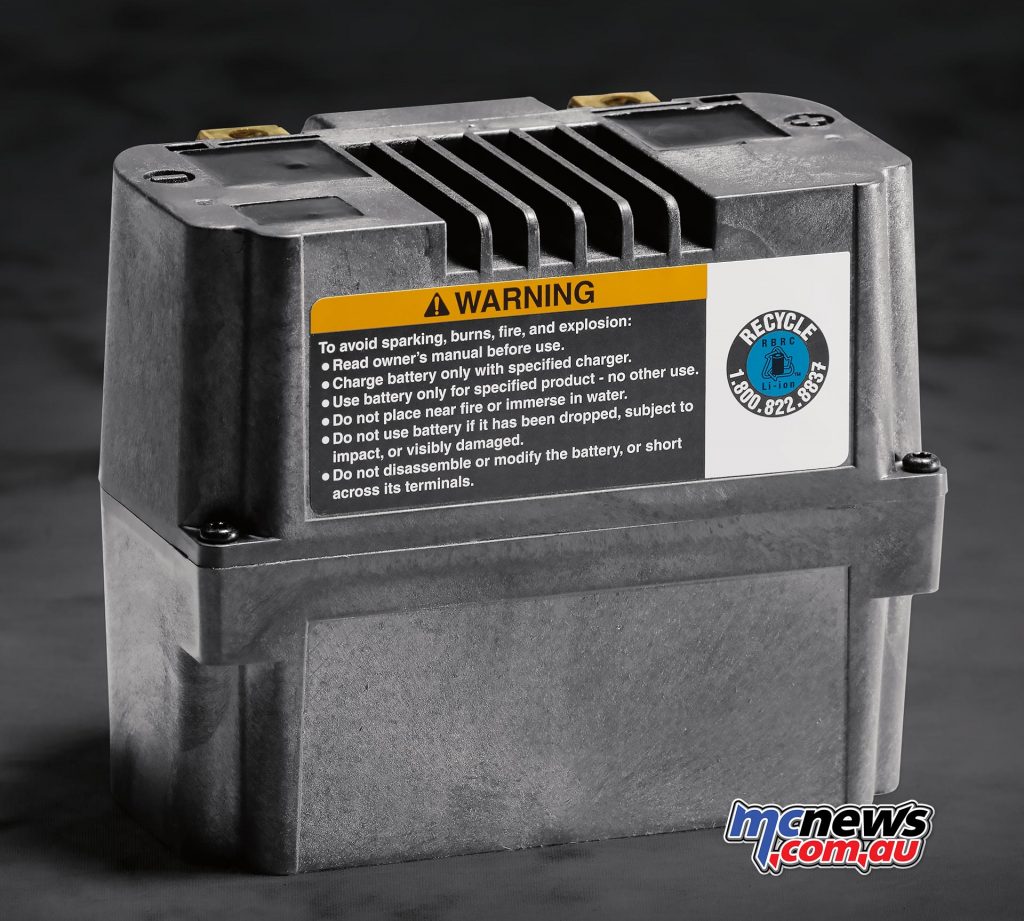
Weight saving aside, I think the introduction of the electric start to the new bike is a huge bonus, and the fact that Yamaha have gone so far as to implement the Lithium-Ion setup and ensure repeated start-up performance via adjusting the engine internals is massive. I honestly went to pull the kick-starter out over ten times during my stint testing the 2018 model, so it will definitely take some getting used to, but it’s something I’ll be happy to adjust with! More ticks…
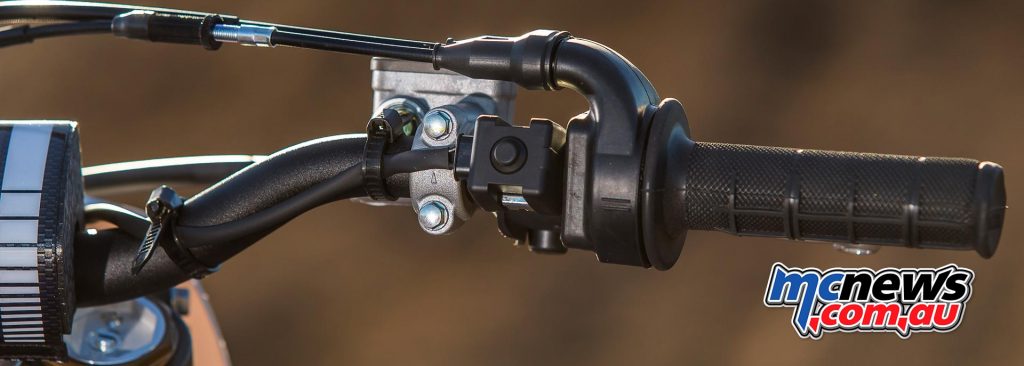
Power Tuner App
Revised ECU settings are another one of the updates for the 2018 model YZ450F, however with the world-first smart phone adjustable engine mapping feature, these can quickly be changed anyway. The “Power Tuner” app, available to all smart phones pairs with the bike’s inbuilt WiFi system, meaning you can connect and alter the bike’s setup anywhere and anytime.
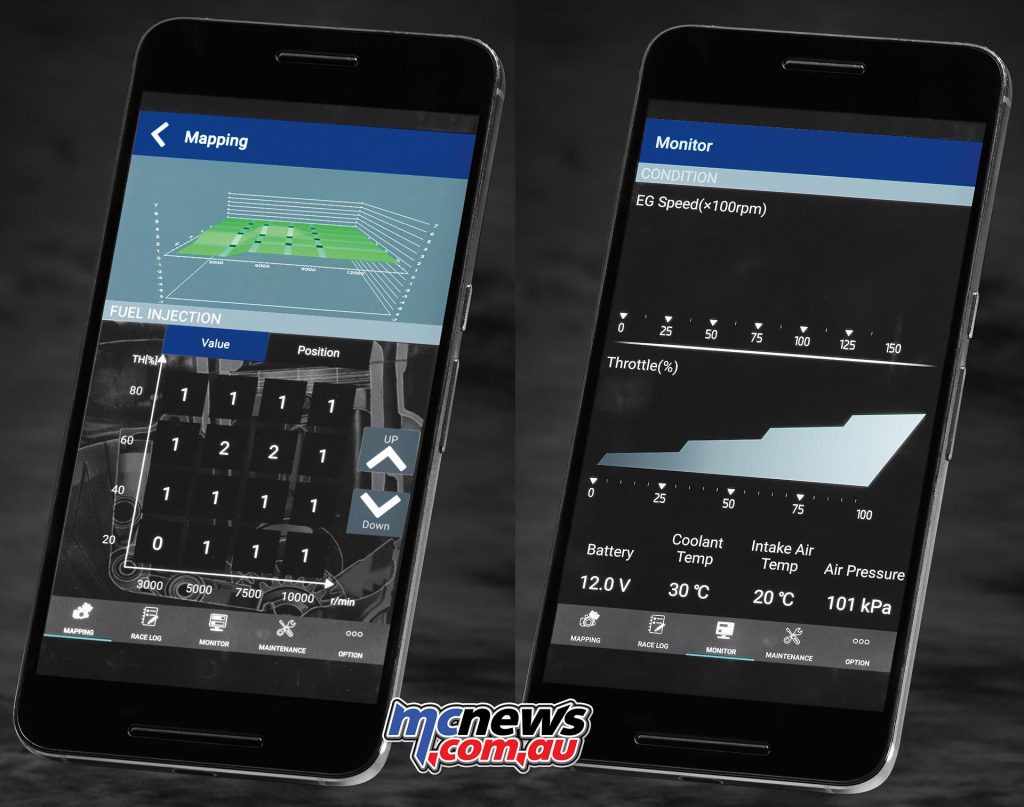
Not only can you adjust the mapping, but diagnostic codes are also a standard feature on the app, which can alert you to any internal issues that you previously may not have been aware of. You can also use the trip and maintenance log features to keep track of the bike’s hours and schedule reminders for when servicing or updates needs to be undertaken.

As the app comes standard with four production spec maps, you can either use those setups, or alternatively use those maps as templates to design your own custom settings, which I initially thought would be quite difficult, but it turned out I was wrong. The adjustments are very easy to make and if you feel you’ve taken a step in the wrong direction you can simply return to the stock settings or the previous custom setting you created in a couple of clicks.
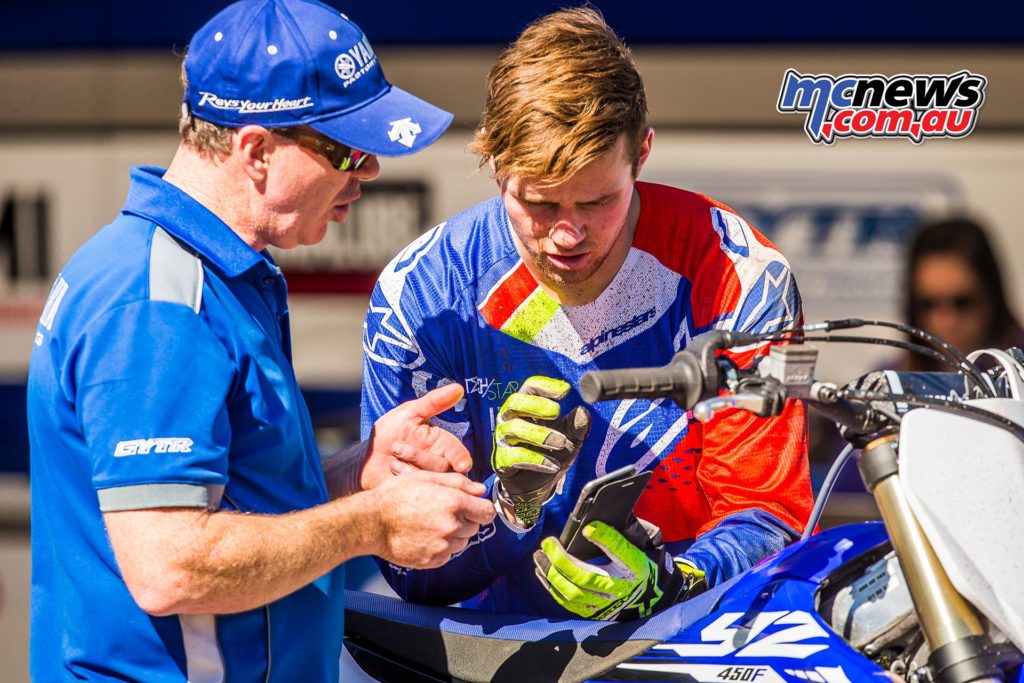
You can also log and save setups that you have created at specific events. For example, if you raced at a sandy circuit like Coolum one weekend and saved your preferred setting for those conditions, including background information about the track type, event, weather, temperature etc., you can return a few weeks later after riding hard pack tracks in between, and simply reconnect the Coolum setting you have saved and then use that as your base setting for the day. Finding that setting has never been easier!

The app also acts as a real-time engine monitor, providing data on the engine RPM, throttle position, battery volts, coolant temperature, and air temperature and pressure. I’d say the best feature though, and the part that impressed me the most, was the fact that you can share your custom settings with others anywhere around the world via email, AirDrop or Android Beam at the touch of a button. That means that riders all around the globe can be sharing and using the exact same map settings between each other from moto to moto, just by playing on their phones…
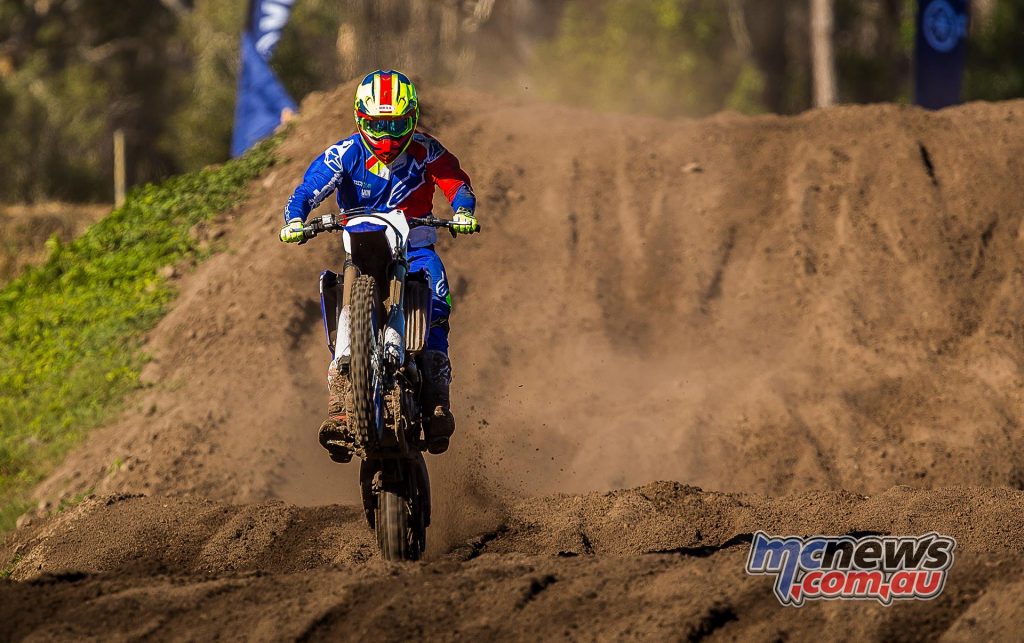
Braking, Aesthetics and Other
The 270mm front brake disc remains standard on the latest model YZ450F, which I’m happy about as a lot of customers typically have to spend more money in sourcing over-sized discs externally when purchasing a new bike, but that’s not the case with the YZ’s. The new model also comes with bold blue DID rims, that not only look good, but save 140g of weight too.
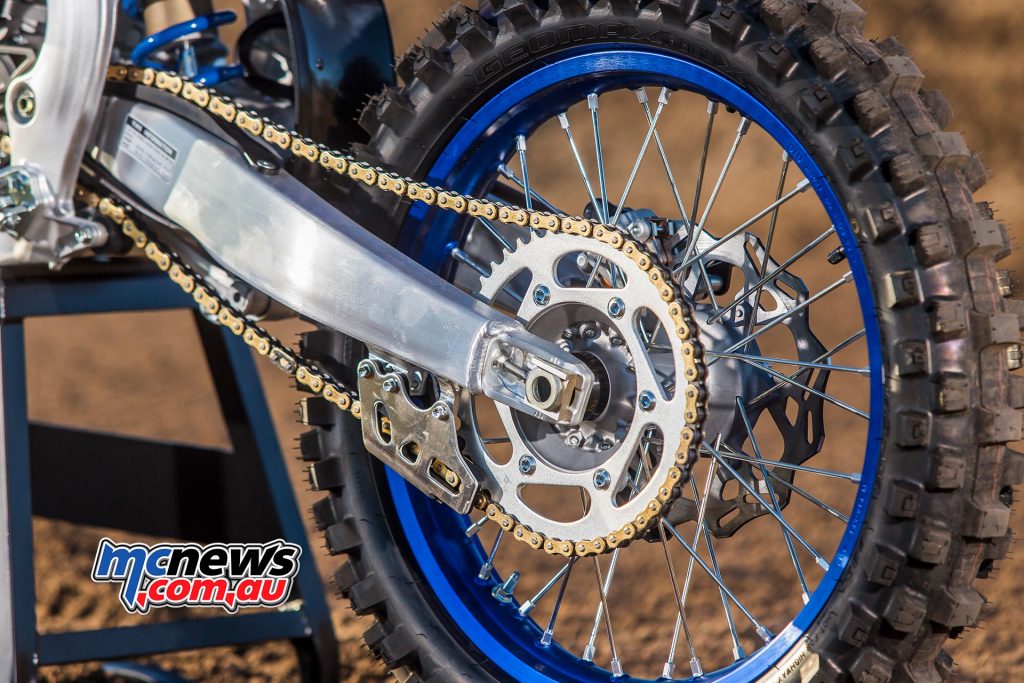
Availability
The 2018 YZ450F will be available in September for $12,399 and will come in both the standard Team Yamaha Blue or the Special Edition White livery. Yamaha Motor Finance is also available to purchase the bike and sits at $47.84 per week. There are also all of the Yamaha genuine parts and accessories that can be fitted out to your bike, including Akrapovic and GYTR by FMF exhaust systems, ported cylinder heads, billet ignition covers, GYTR clutch components and radiator braces, short and tall seats, engine glide plates and air filter components, to reel off just a few of the parts available if you are Bling City inclined.
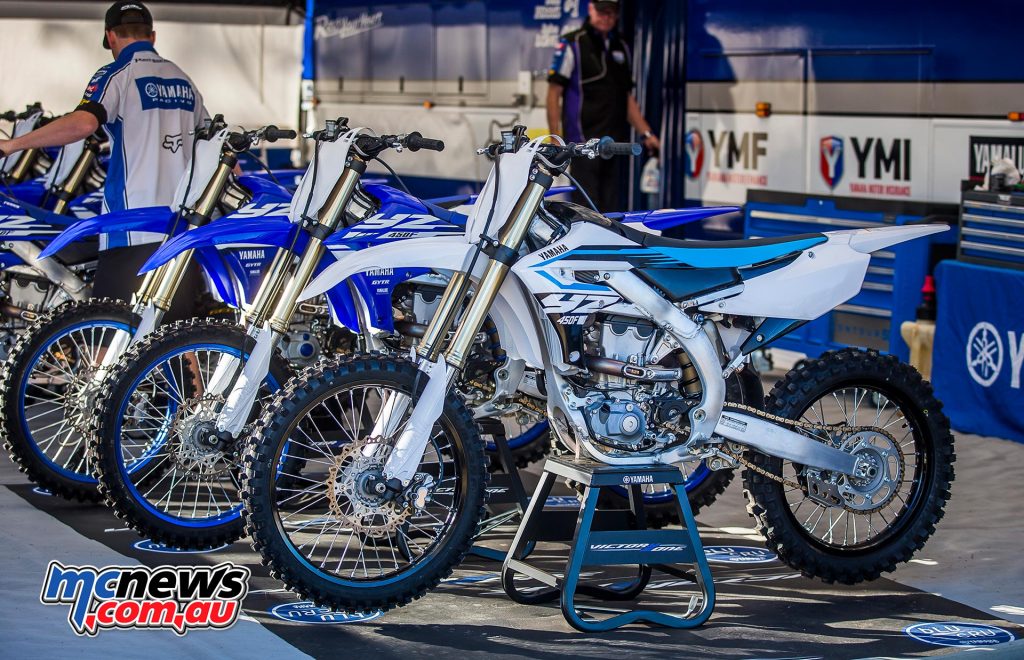
Final Thoughts
Overall, I feel the 2018 YZ450F is another step in the right direction for Yamaha. In terms of how the bike feels – the aggressive power has been smoothed out in the low to mid RPM, it feels much narrower through the tank area and more open in the lap, and it has a very stable character to it. This all combines to allow you to feel more in control of the bike than previous models. In terms of the more extrinsic features, I feel the addition of the electric-start, smart phone Power Tuner app and bold blue rims make the bike seem more exciting and as a result more inviting to the everyday customer – I know they certainly enticed me…













